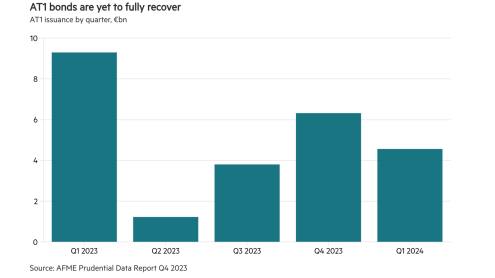Bad loans at French banks are forecast to increase moderately as Covid-19 support measures are gradually phased out, but the sector is expected to avoid a hard landing on asset quality.
Leading French banks recently reported impressive second-quarter results on the back of stronger revenue growth supported by a high degree of business diversification.
Despite tangible signs of a resilient economy and an improving operating environment, France is only expected to return to pre-crisis gross domestic product levels in late 2022.
The country’s economy shrank 8% in 2020 and, as a result, many analysts expect a rise in non-performing loans (NPLs) in the future. “Support measures have delayed the emergence of problem loans, but they have not eliminated them,” wrote Nicolas Hardy, an analyst at Scope Ratings in a recent report.
The NPL ratio at leading French banks has generally declined in recent years, according to The Banker Database. Despite this, Société Générale saw a slight increase to 3.3% in 2020 from 3.2% in 2019.
Despite the economic disruption caused by Covid-19, NPLs have yet to rise significantly owing to active management of bad loan portfolios and continuing credit supply, including in the form of state-guaranteed loans. However, in sectors most sensitive to the side-effects of the pandemic, such as tourism and transportation, or those impacted by the shift to digital, some asset-quality indicators are starting to deteriorate, according to Scope Ratings.
Loan-impairment provisions at leading French banks rose sharply last year, which should provide them with the capacity to manage these exposures and limit further loan losses.
“[French] banks have the capacity to adapt to a tapering of support measures. Like most European banks, large French banks have benefited from these measures, but did not rely on them to continue operating. Their balance sheets have been preserved, and they have built up and maintained excess buffers above minimum regulatory requirements,” Mr Hardy wrote.
Trends identified using The Banker Database, an online database providing comprehensive financial data and insight for 4,000 of the world's leading banks in 190 countries. Contact us.











